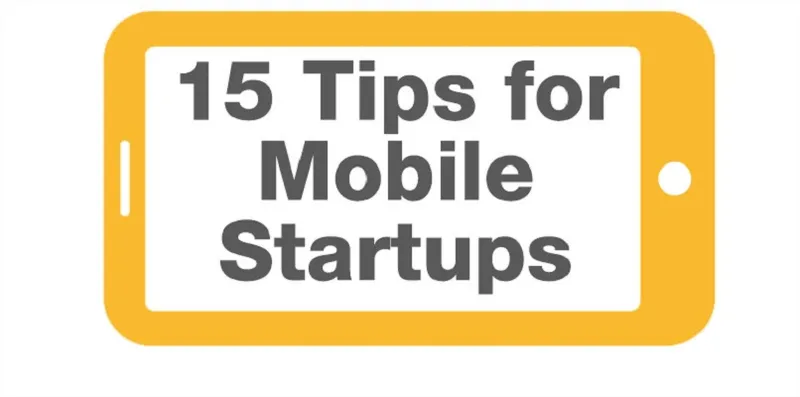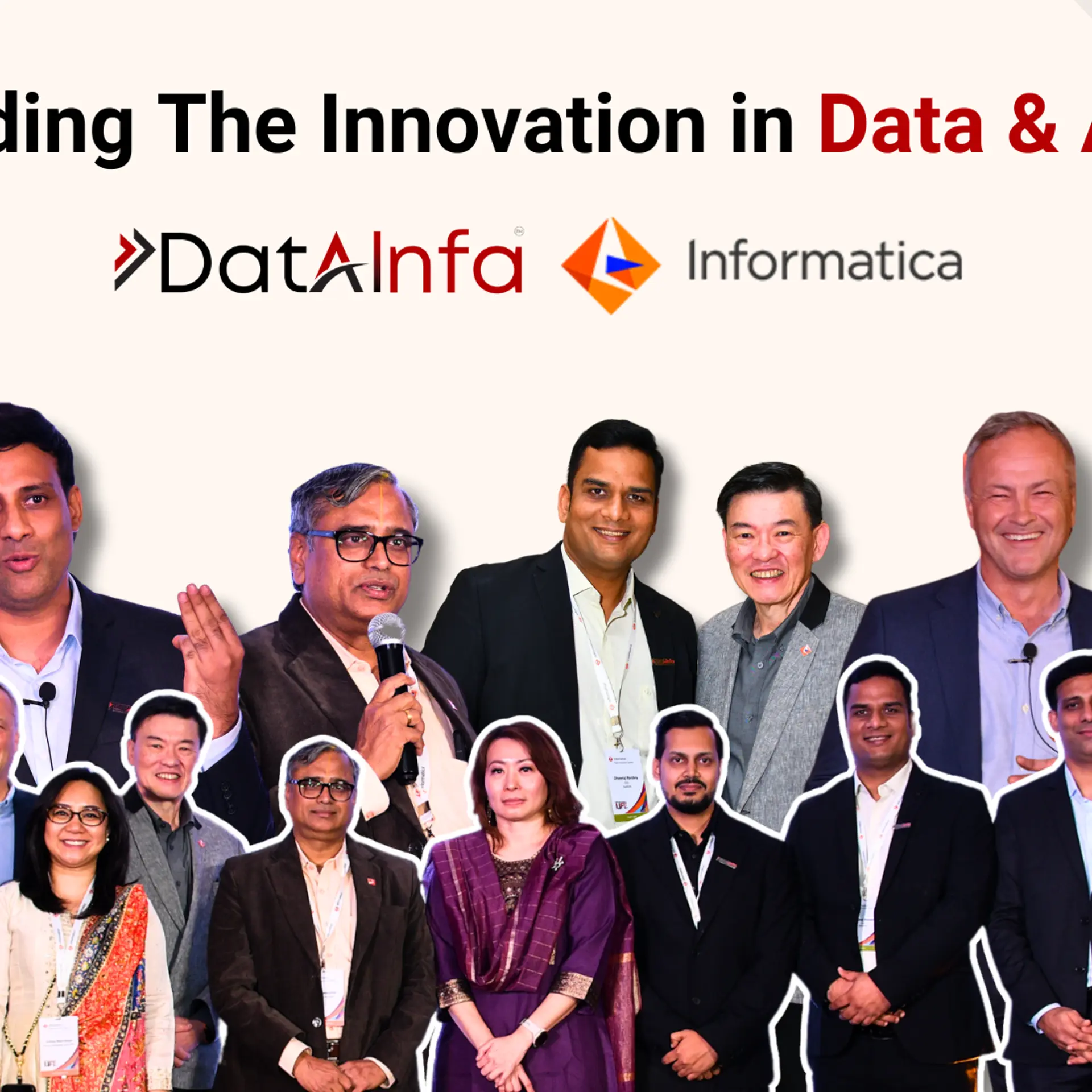15 tips for mobile startups: Insights from Mobile India 2014 conference
The Mobile India 2014 conference, held recently in Bangalore, showcased a range of opportunities in the space of Social, Mobility, Analytics and Cloud (SMAC). In addition to SMAC, there are also opportunities opening up in security and smart sensors, leading some speakers to joke that the acronym SMAC should actually be SSMACS!
In an earlier article, we looked at the top trends in enterprise mobile as identified by speakers from the 2014 conference. The 2013 edition of the conference also featured a panel on mobile startups (see my coverage here).

“Mobile is the centre, cloud is the backbone and analytics is the nerve centre of digital business,” said Manjunath Gowda, CEO, i7 networks. Here is my pick of the Top 15 tips for mobile startups, based on the discussions at the Mobile 2014 conference.
1. Focus on solving real business needs
We are living in an age of realtime information overload. $300,000 is spent on online shopping every minute; 600 videos are uploaded to YouTube each minute; Facebook has over 700,000 updates each minute; and Twitter generates 12 terabytes of data daily – and this is just the tip of the proverbial data iceberg. However, for analytics to make sense of this data is much more than just statistics; it connects realtime occurrences to the big picture and to pressing business needs and insights. Many startups are going after the low-hanging fruit, but there is much more value in sensemaking and decision support.
“The key challenge today is the inability to think big and ask the right questions to make a difference to businesses,” observed Venkatesh Vaidyanathan, VP, Product Management, Business Analytics, SAP Labs.
For example, true benefits arise when startups connect Big Data to predictive maintenance, brand sentiment, threat detection, product recommendations, fraud detection, realtime risk mitigation, realtime demand/supply forecast, personalised care, and resource optimisation. In this regard, Bangalore company Ramyam Intelligence Lab is rightly positioned by offering analytics and Big Data solutions to telcos to help address their needs of personalisation, churn reduction, loyalty management, and cross-selling of services.
2. Tell a story
The business opportunity lies not just in crunching data and unearthing patterns but building a larger narrative, a compelling story. “There are stories lurking in data. Analyse it, capture it, tell a story from it, make it actionable,” urged S. Anand, Chief Data Scientist, Gramener.
Fields like analytics are as much art as science, and players entering this space need to mix analytics skills with IT. Winning customers will depend not on technical skills but on the ability to deliver insights, discovery and new business knowledge – and thus clinch deals with powerful stories.
3. Address enterprise mobile
Much attention understandably focuses on consumer apps, but there is a world of enterprise and productivity apps also fast emerging. Startups can show how SMAC can be used to improve field worker productivity, for white collar and even blue collar workers. Services offered as “also mobile” will become “mobile first” even in the enterprise environment.
More than 50% of employee devices are purchased on their own. 70% of professionals will use smartphones by 2018, said Archana Kamath, Manager, Mobile CoE, EMC Software and Services India. BYOI (Bring Your Own Identity) is the next wave of consumerisation of IT in enterprise space.
Mobile cloud and workflow tools are now becoming available for SMEs too, and a new wave of value is being unleashed. Mobiles give companies not just deep consumer insights but continuous consumer insights, according to Alwyn Lobo, Senior Mobility Solutions Architect, IBM.
4. Offer security solutions
The increasing digital nature of the economy is also creating chaos, and the ‘attack surface’ of businesses is increasing via mobile. This calls for tools and companies who can provide better monitoring and governance of enterprise networks. For example, Misys GeoGuard uses customer location to reduce fraud for banks. The SnapChat hacking incident shows API vulnerability in world of mobile. API security will play centre stage as mobiles become gateways in the Internet of Things, predicted Shreekanth Joshi, Vice President, Cloud Practice Head, Persistent Systems.
“Look out for Trojans like mRats, host-based jammers, and tunnel borers,” cautioned Manjunath Gowda, CEO, i7 networks. 71% of mobile devices have OS/app vulnerabilities, and there has been 600% growth in mobile malware over last couple of years. 90% of BYOD enabled Indian businesses had a mobile incident in last 12 months, according to sources cited by Gowda. This opens up new markets for security products and services.
5. Watch the competitive space
Startups should aim for a ‘blue ocean’ strategy and enter fresh waters – or else figure out a way to do things better, faster, easier and cheaper than existing players. Several existing players and case profiles were highlighted by Dr. Sanjoy Paul, IEEE Fellow and Managing Director, Accenture Technology Labs India: such as blippar (mobile ads with augmented reality), and use of analytics by Walmart to predict product demand and by Google to forecast ad keyword demand. This reflects the overall trend of increasing real time bidding (RTB) exchanges; static models are declining. Reach.ly mines Twitter to help hotels reach potential guests in real time. Coursera is using analytics to better serve learners. FitBit and OnStar are other good examples of realtime analytics in action.
6. Address the “Four Vs” of Big Data
Big Data is important because there is too much data and too little time for businesses to take informed decisions in realtime. Hence startups should find opportunity in one or more of the “four Vs” of Big Data: volume, variety, velocity, value. In other words, they should show business leaders how they can help tackle data overload, data diversity, realtime data, and mining of insights.
7. Watch sensor networks, M2M and IoT
The Internet of Things (IOT) is currently at early hype stage, but will soon become mainstream, as the recent Consumer Electronics Show indicated: this ranges from wearable devices to smart tennis rackets, and also opens the door to a new range of analytics products and services. Mobiles are cumulatively becoming sensor aggregators, said Shreekanth Joshi, Vice President, Cloud Practice Head, Persistent Systems.
In healthcare, for example, the ‘digitised patient’ will become the hub for measuring, modelling and predicting treatments based on instrumentation and on-body sensors. Typical M2M scenarios encompass energy and water meters, cars, cranes, vending machines, fridges, air-conditioners, and ATM machines. The ATM attack incident in Bangalore shows the importance of monitoring all locations via M2M, said S.Girish, COO, ConnectM.
8. Move beyond location to context
Location and context are blending together to create new kinds of mobile-powered services and advertising. For example, a Tokyo company recruits drivers for two-hour time slots in different neighbourhoods; the matching is based on proximity of available drivers. Analytics coupled with mobile is a powerful combination.
9. Choose cloud for scale
Cloud computing drastically reduces barriers to entry for infrastructure improvement for startups in the growth curve, as shown by the acceleration of companies such as Animoto. The costs for launching a startup and promoting it are much lower these days than before, thanks to cloud infrastructure and social media. However, it should be noted that the business fundamentals of team management and financial models remain unchanged.
10. Evolve from being aware to becoming smart
“Tomorrow’s enterprise is hyperconnected, super-aware, and borderless. Will it be smarter?” asked Ramesh Adiga, AVP & Head, Global Delivery, Mobility Unit, Infosys. The next stage of mobile evolution is ‘superphones’ driven by platforms and lifestyle devices.
Harrah’s Casino in Las Vegas is using Big Data in blackjack tables to figure out how to make gamblers comfortable and stay longer. Designer shoe store Meatpack in Guatemala uses realtime analytics to ‘hijack’ customers from competitors. “Analytics is changing the face of what we usually think of as mundane business,” said Sanjoy Paul of Accenture Labs. Startups need to go beyond ‘the usual suspects’ and identify opportunities right at the street corners and not just main street, and help clients move ‘from dashboards to decisions.’
11. Track emerging business models
The acquisition of Bangalore-based app optimisation company Little Eye Labs by Facebook for an estimated $15 million has shown that app infrastructure and ecosystems are also ripe targets for startup activity. An interesting model to watch is MBaaS – mobile backend as a service, as shown in app cost estimation and cloud models (Kinvey, Appcelerator, FeedHenry). Nicira can reconfigure physical network into multiple virtual networks.
12. Think big
Startup founders should not just look at the idea or product but also the overall context, customer needs, scalability, UI/UX, and

viral effects, advised Bharati Jacob, Founder Partner, Seedfund. For example, Limo service Uber may work well in Bangalore, but not have as much impact in Bombay where there are reliable taxis everywhere, she observed.Many startups with good models focus largely on the local market and are not thinking global from the early stages. A few are, such as Zomato from India. “Maybe the Indian education system does not encourage us to think big and aim high,” added Jacob.
13. Make mobile marketing more targeted
Mobile marketers should stay away from the ‘spray and pray’ model of mainstream media, advised Ashvin Vellody, Partner, KPMG. There are numerous ways in which startups can help marketers experiment and refine ways of segmenting users and messages right down to, for example, passengers stranded at airports and train stations.
14. Focus on social discovery and not social shopping
For a range of reasons, social shopping online has not worked well, but mobile social media has accelerated the discovery, inspiration and validation of online shopping, according to Kaushal Sarda, CEO, Kuliza Technologies. Social media is about conversations, so digital marketers and advertisers should figure out how to be part of or stimulate conversations, he advised.
15. Multiple mobile payment models will co-exist
Mobiles accelerate consumption of content and commerce, according to Ravi Pratap, Co-Founder and CTO, MobStack. “Multiple kinds of m-payment models will be needed in India, including via mobile operator billing as in the US,” said Pratap. Tier 3 and Tier 4 cities are takeoff markets for e-commerce in India, for everything from the latest books to lingerie sales, said Ashvin Vellody, Partner, KPMG. Retailers in India are executing their marketing campaigns on mobile social media now, not just PC-based Facebook, added Hrish Thota, Senior Manager, Social Computing, Happiest Minds.
In sum, mobile is pivotal to sense, influence and fulfill demand. “Mobiles will be ubiquitous and pervasive,” said Adiga of Infosys. But only an estimated 15% of Fortune 500 organisations have a concrete mobility strategy, opening up a wide door of opportunity for players in mobile space.
“Every business is a digital business, thanks to mobile, social, cloud and analytics. This is happening on a scale not possible before. SMAC helps companies simplify, accelerate, adapt and make better decisions,” said Accenture’s Paul.
Interesting questions to ponder – possibly at next year’s Mobile India conference – would be whether Facebook will be eclipsed by the next generation of social media, how cross-pollination between sectors will throw up new opportunities, and whether regulation and government may dampen the enthusiasm of the tech sector.







